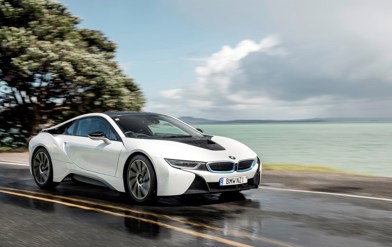Remember the 1954 300SL? The slippery shape, the gullwing doors, that rasping engine? Well this 300SL is not that 300SL, or at least not entirely. The car that once more made Mercedes-Benz a brand to aspire to after the war came even earlier than that.
Unsurprisingly Mercedes-Benz was on its knees when peace finally came in 1945. Its factory had been bombed, its assets sold to pay for war reparations. Production finally restarted in 1947 with pre-war designs that continued to be built into the 1950s.

But Mercedes bosses were desperate to return the company to the time it had enjoyed before the war where its road cars were among the most admired of all, its racing cars the most successful bar none. It fell to one Rudolf Uhlenhaut, a gifted Anglo-German engineer, designer and driver to suggest a path.
There was no money to enter the newly formed Formula 1 World Championship – Mercedes couldn’t even afford to design a bespoke racing engine – but Uhlenhaut was convinced that a very cleverly conceived sports car could make the Mercedes three-pointed star shine once more.
The car he conceived was a road racer. With only the 3.0-litre, six-cylinder engine and gearbox from a saloon available, he knew he’d not be able to match the power of Ferrari opposition toting purpose-built 4.1-litre V12 motors. What he came up with instead was the lightest, more aerodynamically efficient car of its kind ever created, and the gullwing doors were part of that plan.

In private it was called the W194, but in public it was called the 300SL. And it set the racing world on fire. With a fraction of the opposition’s power, in 1952 it still won Le Mans, the Carrera Panamericana and the big sports car race at the Nurburgring.
It came second on the Mille Miglia, too. So successful was it that the US Mercedes importer Max Hoffman convinced the factory to make a refined, roadgoing version and thus the 300SL “Gullwing”, known and loved the world over to this day, was born.
The Gullwing’s performance in 1954 was sufficiently extraordinary for it now to be considered the first true supercar. In an era where many cars would start to shake at 70mph, it would howl across the planet at near 140mph. Yet it was beautifully built, supremely comfortable and, thanks to its incredible aerodynamics, almost unbelievably quiet at speed.

No surprises that today a Gullwing in good condition and with decent provenance is a million-pound motor car. Back then its primary purpose was to transform the image of Mercedes-Benz in the US, the market that dwarfed all others at the time. And it did so not only there, but all over the world.
It would be wrong to say it made Mercedes cool again because that would imply it had been that way before. But the truth is that before the Gullwing and before the war, people tended to merely to respect Mercedes-Benz and its achievements. It was the original 300SL racer and the gullwing road car it begat that made people truly fall in love with Mercedes-Benz for the first time and set it on the road to long lasting, sustainable success.
- Telegraph.co.uk




